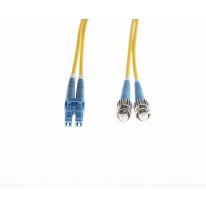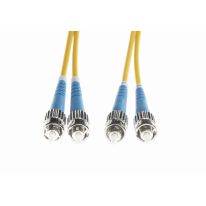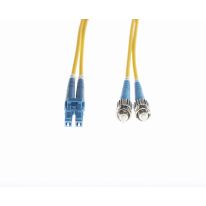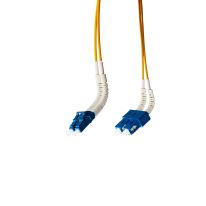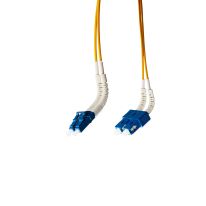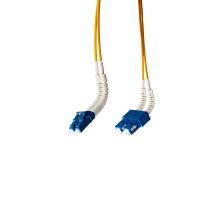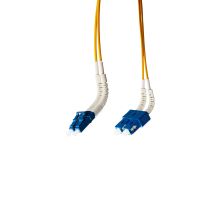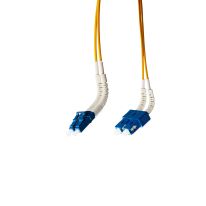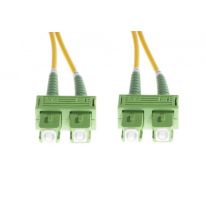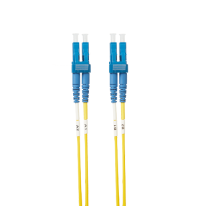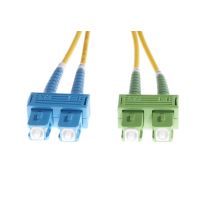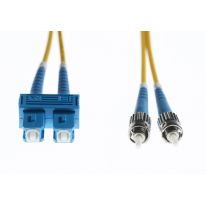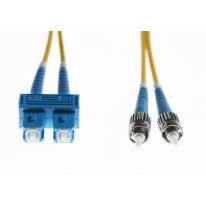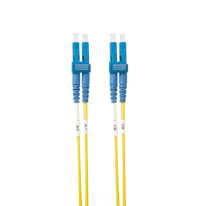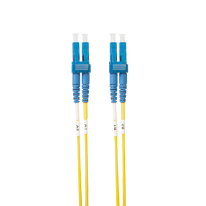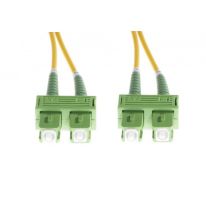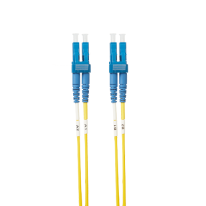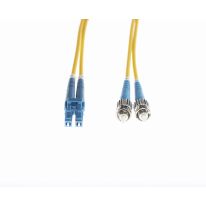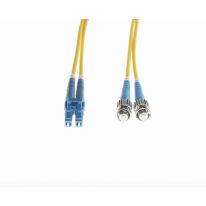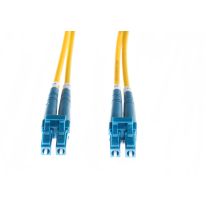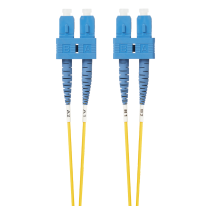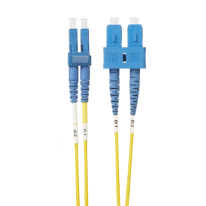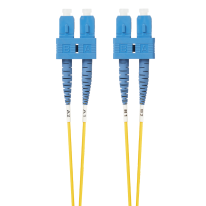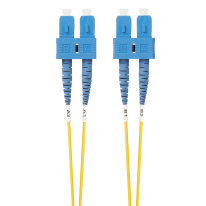-
SKU: FL.OS2LCST2M 2m LC-ST OS1 / OS2 Singlemode Fibre Optic Cable : Yellow
Single Pack
$18.33 $16.66In stock
-
SKU: FL.OS2STST3M 3m ST-ST OS1 / OS2 Singlemode Fibre Optic Cable : Yellow
Single Pack
$21.14 $19.22In stock
-
SKU: FL.OS2LCST20M 20m LC-ST OS1 / OS2 Singlemode Fibre Optic Cable : Yellow
Single Pack
$35.24 $32.04In stock
-
SaleSKU: 015.011.3105 5m LC-SC Flexi Boot OS1/OS2 Singlemode Fibre Optic Cable
Single Pack
Special Price $28.83 $26.21 Regular Price $41.18 $37.44In stock
-
SKU: 015.011.3104 3m LC-SC Flexi Boot OS1/OS2 Singlemode Fibre Optic Cable
Single Pack
$29.06 $26.42In stock
-
SKU: 015.011.3103 2m LC-SC Flexi Boot OS1/OS2 Singlemode Fibre Optic Cable
Single Pack
$25.17 $22.88In stock
-
SKU: 015.011.3102 1.5m LC-SC Flexi Boot OS1/OS2 Singlemode Fibre Optic Cable
Single Pack
$24.83 $22.57In stock
-
SKU: 015.011.3100 0.5m LC-SC Flexi Boot OS1/OS2 Singlemode Fibre Optic Cable
Single Pack
$22.02 $20.02In stock
-
SKU: FL.OS2SCAPCSCAPC5M 5m SC/APC-SC/APC OS1 / OS2 Singlemode Fibre Optic Duplex Cable
Single Pack
$30.76 $27.96In stock
-
SKU: FL.OS2LCLC3M 3m LC-LC OS1 / OS2 Singlemode Fibre Optic Cable | Yellow
Single Pack
$21.14 $19.22In stock
-
SKU: FL.OS2SCSCAPC3M 3m SC-SC/APC OS1 / OS2 Singlemode Fibre Optic Duplex Cable
Single Pack
$21.73 $19.75In stock
-
SKU: FL.OS2SCST2M 2m SC-ST OS1 / OS2 Singlemode Fibre Optic Cable : Yellow
Single Pack
$18.33 $16.66In stock
-
SKU: FL.OS2SCST1M 1m SC-ST OS1 / OS2 Singlemode Fibre Optic Cable : Yellow
Single Pack
$16.91 $15.37In stock
-
SKU: FL.OS2LCLC30M 30m LC-LC OS1 / OS2 Singlemode Fibre Optic Cable: Yellow
Single Pack
$42.30 $38.45In stock
-
SKU: FL.OS2LCLC20M 20m LC-LC OS1 / OS2 Singlemode Fibre Optic Cable : Yellow
Single Pack
$35.24 $32.04In stock
-
SKU: FL.OS2SCAPCSCAPC10M 10m SC/APC - SC/APC OS1 / OS2 Singlemode Fibre Optic Duplex Cable
Single Pack
$32.54 $29.58In stock
-
SKU: FL.OS2LCLC15M 15m LC-LC OS1 / OS2 Singlemode Fibre Optic Cable : Yellow
Single Pack
$33.50 $30.45In stock
-
SKU: FL.OS2LCST3M 3m LC-ST OS1 / OS2 Singlemode Fibre Optic Cable : Yellow
Single Pack
$21.14 $19.22In stock
-
SKU: FL.OS2LCST5M 5m LC-ST OS1 / OS2 Singlemode Fibre Optic Cable : Yellow
Single Pack
$29.95 $27.23In stock
-
SKU: FL.OS2LCLC05M 0.5m LC-LC OS1 / OS2 Singlemode Fibre Optic Cable | Yellow
Single Pack
$16.03 $14.57In stock
-
SKU: FL.OS2SCSC05M 0.5m SC-SC OS1 / OS2 Singlemode Fibre Optic Cable : Yellow
Single Pack
$16.03 $14.57In stock
-
SKU: FL.OS2LCSC10M 10m LC-SC OS1 / OS2 Singlemode Fibre Optic Cable : Yellow
Single Pack
$31.72 $28.84In stock
-
SKU: FL.OS2SCSC30M 30m SC-SC OS1 / OS2 Singlemode Fibre Optic Cable: Yellow
Single Pack
$42.30 $38.45In stock
-
SKU: FL.OS2SCSC3M 3m SC-SC OS1 / OS2 Singlemode Fibre Optic Cable : Yellow
Single Pack
$21.14 $19.22In stock
Singlemode Fibre Cables: OS2/OS1
184 Results




